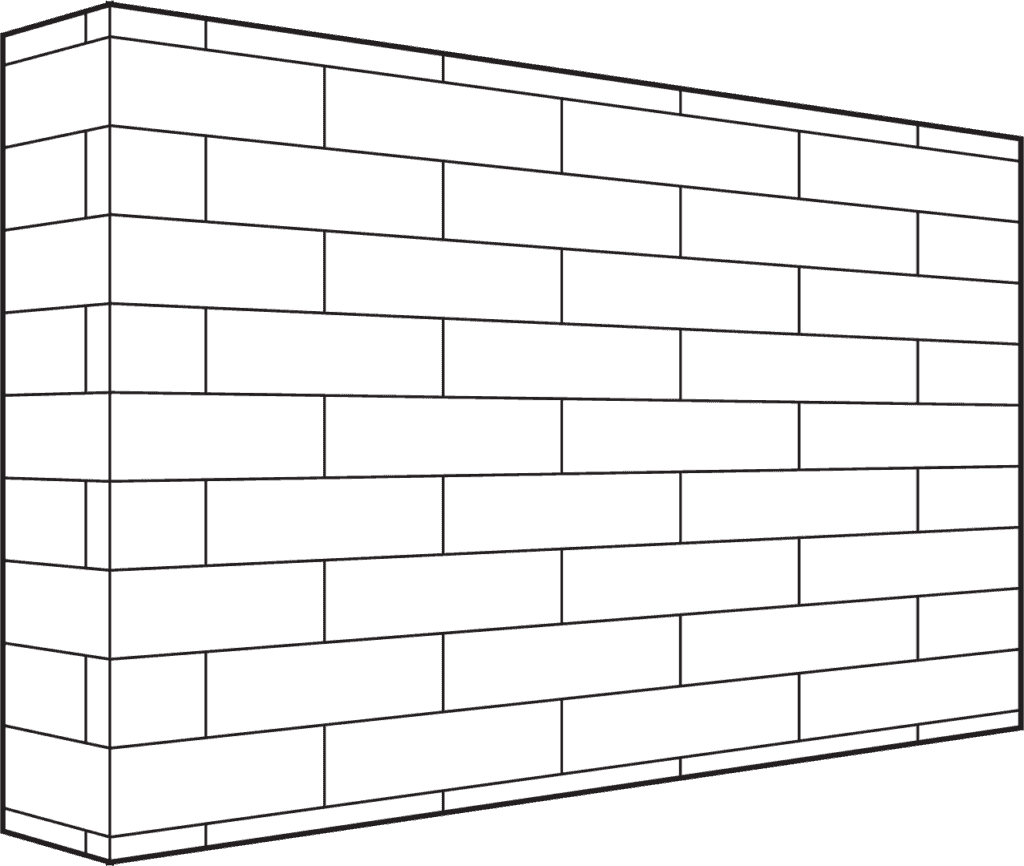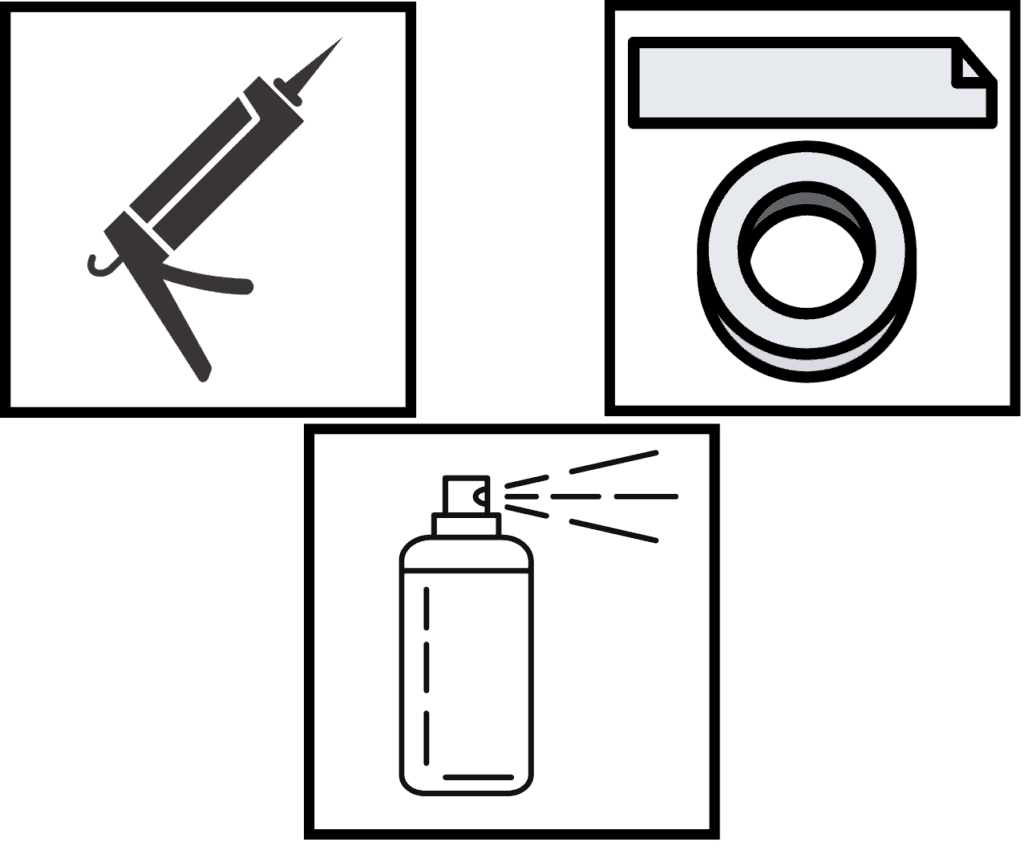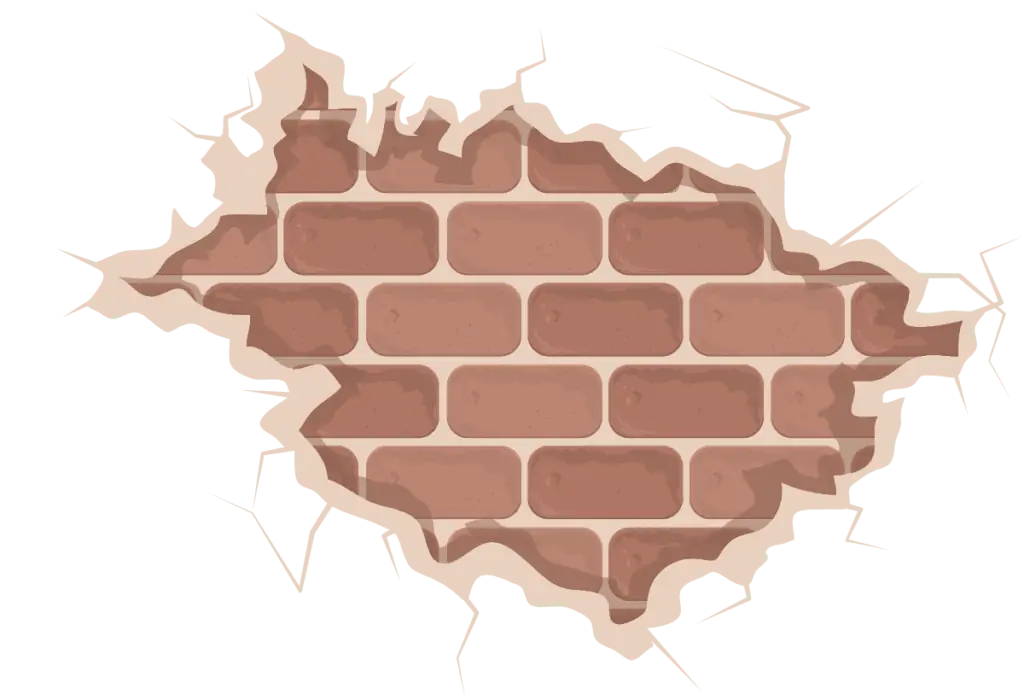Choosing the best adhesive for acoustic foam depends on several factors. You must consider permanence, the wall surface, and whether or not you’re allowed to leave any (minor) damage.
You can check out my article on how to hang acoustic foam to a wall for some step-by-step instructions, but read through this article first.
Here, I’ll review my top picks for the best adhesive for acoustic foam. I’ll suggest options for different wall surfaces and whether you need a temporary or permanent solution.
Our Top 7 Adhesive for Acoustic Panels
Below you’ll find suggestions for sprays, standard adhesives, tapes, and more. I’ve grouped them into sections to hopefully make selection easier.
1. Our Top Pick: 3M Command Strips
- Type: Double-sided tape
- Weight limit: Up to 12 lbs (7.2kg)
- Tool required: No
3M command strips are just one of many adhesive-backed products, but they’re possibly the best product to mount acoustic foam. Although they’re meant for picture frames, they’ll work perfectly for this, too.
These strips have an adhesive backing that adheres to pretty much any flat wall surface. You can use them on untreated surfaces like brick or concrete, but there are possibly better options for that.
Setup is a breeze. You just click the two sides together, stick to your acoustic panel and then stick to the wall. Depending on the size, a pair of command strips can hold between 2 and 8lbs., which should be more than enough for a foam panel.
Although they’re described as non-damaging, some users have noted that the strips peel some paint off the walls if left for a long time. This is pretty rare, though, so don’t worry too much about it happening.
- Specifically designed for convenient wall hanging.
- Come in various sizes and weight allowances.
- Really easy to use.
- May damage walls in rare cases.
2. Cologo Adhesive Hooks
- Type: Hook
- Weight limit: Up to 22 lbs. (10 kg)
- Tool required: No
These adhesive hooks are another simple product to use. You peel the backing off, stick them to the wall, and hang your panels. Each hook is rated up to 22lbs. and is temperature- and water-resistant.
They’ll stick to most flat surfaces, including painted walls. However, as with other adhesive products, the paint can impact the hook’s weight limit. This isn’t something you’ll need to worry about when hanging acoustic foam panels, though.
You get 40 hooks in this pack, which is useful because you’ll need quite a few for each panel you’re hanging. They’re not too difficult to remove without damage, either. Simply heat with a hairdryer for up to 30 seconds and they should peel off.
In terms of downsides, the only major thing is that you’ll need to attach some kind of loop to your panels. You could use another hook or simply a bit of string and some tape.
- Will stick to most surfaces.
- Easy to remove and reapply.
- Surprisingly high weight allowance for such small hooks.
- You’ll need to attach loops to your panels.
3. Best Spray-On Adhesive: 3M Super 77 Permanent Glue
- Type: Spray
- Weight limit: Not specified
- Tool required: No
It should be no surprise that a company like 3M would dominate a list about adhesives. This spray adhesive will stick almost anything to anything else and is suitable for use on lightweight materials.
That said, when installing acoustic foam panels, you’ll want to use a specific acoustic adhesive to stick the foam to cardboard backing. You can then use the 3M to stick the cardboard to the wall, as it could melt the acoustic foam. The acoustic spray glue also has a unique spray pattern, making it easy to use.
This spray adhesive is low VOC (Volatile Organic Compound) and, as some users have stated, is less sticky than the normal product as a result. However, it’s also got a better mist pattern and, with enough pressure, will happily stick a foam panel to a wall.
Its minor lack of stickiness is its only real downside. Other users stated that it loses its adhesion in heat, which could be an issue. If you’re concerned about these problems, opt for 3M’s Hi-Strength 90 Spray Adhesive instead.
- Wide mist pattern.
- Low VOC.
- Works with cardboard, fabric, wall surfaces, and more.
- Not as sticky as other 3M spray adhesives.
4. Best Adhesive Caulk: Gorilla Glue Heavy Duty
- Type: Caulk
- Weight limit: Not specified
- Tool required: Caulking gun
Silicone adhesive can be a useful alternative to spray adhesive. If nothing else, something like this Gorilla Glue adhesive gives you much better control over where you’re applying the product. Of course, you’ll need a caulking gun to apply it.
Because it’s silicone, it shouldn’t react negatively with the acoustic foam. Even so, it’s sensible to still use a backing material, as this glue could clog the foam’s holes, reducing its efficacy.
Unlike spray products, solid adhesives should work well on all wall surfaces. This construction glue is rated for use on exposed brick and concrete, so should be your go-to option if they’re what you’re working with.
Some users state that it takes quite a while to actually bond materials together. As such, you might find yourself holding your panel in place for a while, but once it sticks, it won’t be going anywhere!
- Silicone won’t react with acoustic foam.
- Strong adhesion.
- Works on untreated wall surfaces.
- Takes a while to actually bond.
5. E6000 Craft Adhesive
- Type: Liquid gel
- Weight limit: Not specified
- Tool required: No
Sometimes, you just can’t go wrong with standard glue. E6000 Craft Adhesive is similar to superglue, but it’s designed for use on fabrics, ceramics, and more. It should work pretty well for gluing cardboard-backed panels to a wall surface.
It dries quite quickly but takes a day or two to cure fully. If you want it to stick even quicker, it helps to expose it to air first. Do this by squeezing some onto a plate and then applying it to your foam panel.
As with most other products, you’ll still want to put a backing on your foam. This glue will clog the foam’s cells, which will reduce its acoustic properties. Again, use a foam-safe adhesive for sticking the back and foam together.
One thing to watch out for with this glue is that it smells pretty bad. Make sure you use it in a well ventilated area because the fumes are pretty nasty. By extension, you’ll want to avoid the room while the glue cures and the smell dissipates.
- Straightforward to use.
- Bonds effectively between wall surfaces and natural materials.
- Dries clear.
- Smells really bad.
6. Gorilla Glue Mounting Strips
- Type: Double-sided tape
- Weight limit: Up to 7 lbs. (3.17 kg)
- Tool required: No
These Gorilla Glue Mounting Strips are essentially double sided tape designed for heavy duty mounting. They’re also known as adhesive squares for obvious reasons. Each adhesive square can hold up to 7lbs., which will be more than enough for an acoustic foam panel.
They’re ideal for both smooth and rough surfaces, meaning you could use them on anything from drywall and wood to exposed brick or concrete. Better still, you won’t need to back your acoustic foam, as the tape won’t impact its acoustic ability.
In terms of downsides, these are more likely to cause damage to your wall than other options. This is because they’re so sticky that they’ll pull paint off when you try to remove them. However, this is a testament to how good the product actually is!
Another issue raised by users is that it’s quite difficult to remove the backing, as there’s no peel strip. Getting the first side off isn’t too hard, as you can pinch the strip slightly. To remove the second side, it’s helpful to lift it a bit before you first stick it down.
- Quick and easy option.
- Will stick to all wall surfaces.
- Doesn’t require a backing on the foam panel.
- Difficult to remove once in place.
- Hard to get the backing off the strip.
7. Velcro 6ft. Self-Adhesive Roll
- Type: Velcro
- Weight limit: Up to 15 lbs. (6.8 kg)
- Tool required: No
Although this Velcro roll isn’t tape, this is about the closest category for it. It has plenty of benefits over the other options mentioned, least of all that you can take the panels down when they’re not needed.
If you’ve ever used any kind of hook-and-loop tape, you’ll know how to use this. Stick one side to the panel, the other side to the wall, and you’re done. Luckily, the adhesive is stronger than the Velcro, so there’s no danger of ripping it off the wall.
A benefit of buying it in a roll like this is that you can cut the strips to the exact size you need. Also, the smallest roll is 20ft. long, which will give you enough to hang a lot of foam panels!
The only downside is that you’ll have one side of Velcro left on your wall. While it’s not the worst looking thing, it will be noticeable. To get around this, you could always Velcro some pictures to the wall when you don’t need the foam panels.
- Offers flexibility for taking the panels down.
- Easy to use.
- High adhesion.
- Leaves Velcro strips on the wall when not in use.
Buying Considerations before Buying
Although choosing adhesive for mounting acoustic foam isn’t difficult, there are some things to think about. Here are what I consider to be the most important factors.
Wall Type

The type of wall on which you’re mounting acoustic foam matters. Specifically, it’s whether the surface is treated or exposed. Brick and concrete are both porous surfaces and textured surfaces, so you generally won’t want to use spray adhesives.
All the options above will work on smooth surfaces, such as drywall or plastered brick/concrete. Some products advise they won’t be as successful on painted surfaces, but this isn’t something you need to worry about when hanging acoustic foam panels, as they’re quite light.
Glue Type and Drying Time

Very few products can be stuck directly to acoustic foam. This is either because they have some solvent properties and could melt the foam or because they’ll clog the pores. Only something like sticky tape could be applied directly to the foam.
Spray adhesive will dry the quickest – some within 60 seconds. Liquid glues will take the longest. You could be looking at several minutes of bonding time and then a day or two of curing time.
If you plan to use a liquid glue for whatever reason, think about how you’ll hold the panels in place while it dries. It could be as simple as holding it, or you could wedge it in place with something like a bookcase.
Of course, this isn’t an issue with stick-on products like hooks or command strips. So, if you’re looking for a quick and easy solution, these could be the product for you.
Damage to the Wall

Potential damage to the wall surface is a vital consideration for both renters and homeowners alike. If you’re renting, you’ll want to avoid any possibility of damage. In my article on hanging acoustic panels, I suggest some entirely non-invasive methods, so check those out.
For the lowest chance of wall damage, opt for something like command strips or adhesive hooks. You can easily remove these by applying heat, and they should pull right off.
Any kind of permanent solution (spray adhesive, silicone glue, etc.) could remove paint and plaster. Unsurprisingly, there’s a correlation between bonding strength and the potential for damage to walls.
Safety Considerations
There are a couple of safety considerations when hanging acoustic panels. First is the safety of the adhesive you’re using. By this, I mean whether it’s low VOC, safe to use around pets and kids, and so on.
If you’re working in a small room, opt for a low VOC product. It doesn’t matter as much in larger rooms, but always have the windows open. Similarly, if there are kids or pets around, look for a non-toxic product just to be safe.
The other concern is adhesion strength and longevity. For example, silicone glue has high bond strength, so would be preferable for a panel that’ll stay where it is. On the other hand, adhesive hooks mean the panel could fall down if knocked. While they’re not heavy, you’ll want to avoid this if you’re hanging them over a seating area.
Generally, it’s not difficult to work out how safe an adhesive will be. The greater the bond strength, the less danger there is of it falling down. But you must balance this against other factors, such as damage to walls and whether the panels are temporary. It ultimately depends on your goals for the project.
Final Thoughts
Hopefully, you’ve now got plenty of options for what to use when mounting acoustic foam panels.
My top pick overall is the 3M Command Strips. They’re simple to use, have high adhesion, and generally won’t damage your wall surface. Failing that, the 3M spray adhesive would be my next top pick.
Do you have any other suggestions for the best products for hanging acoustic foam? Let me know below.







